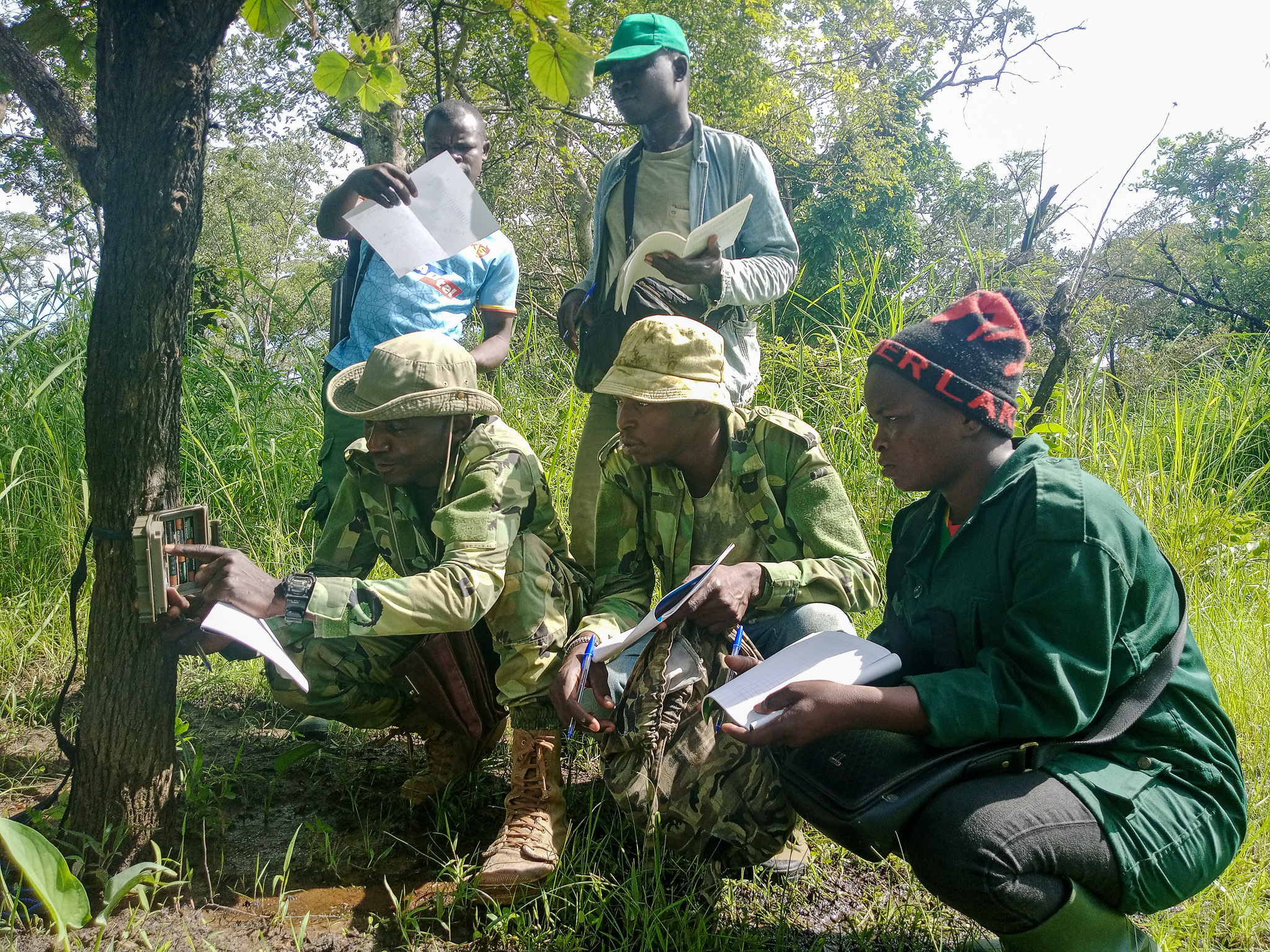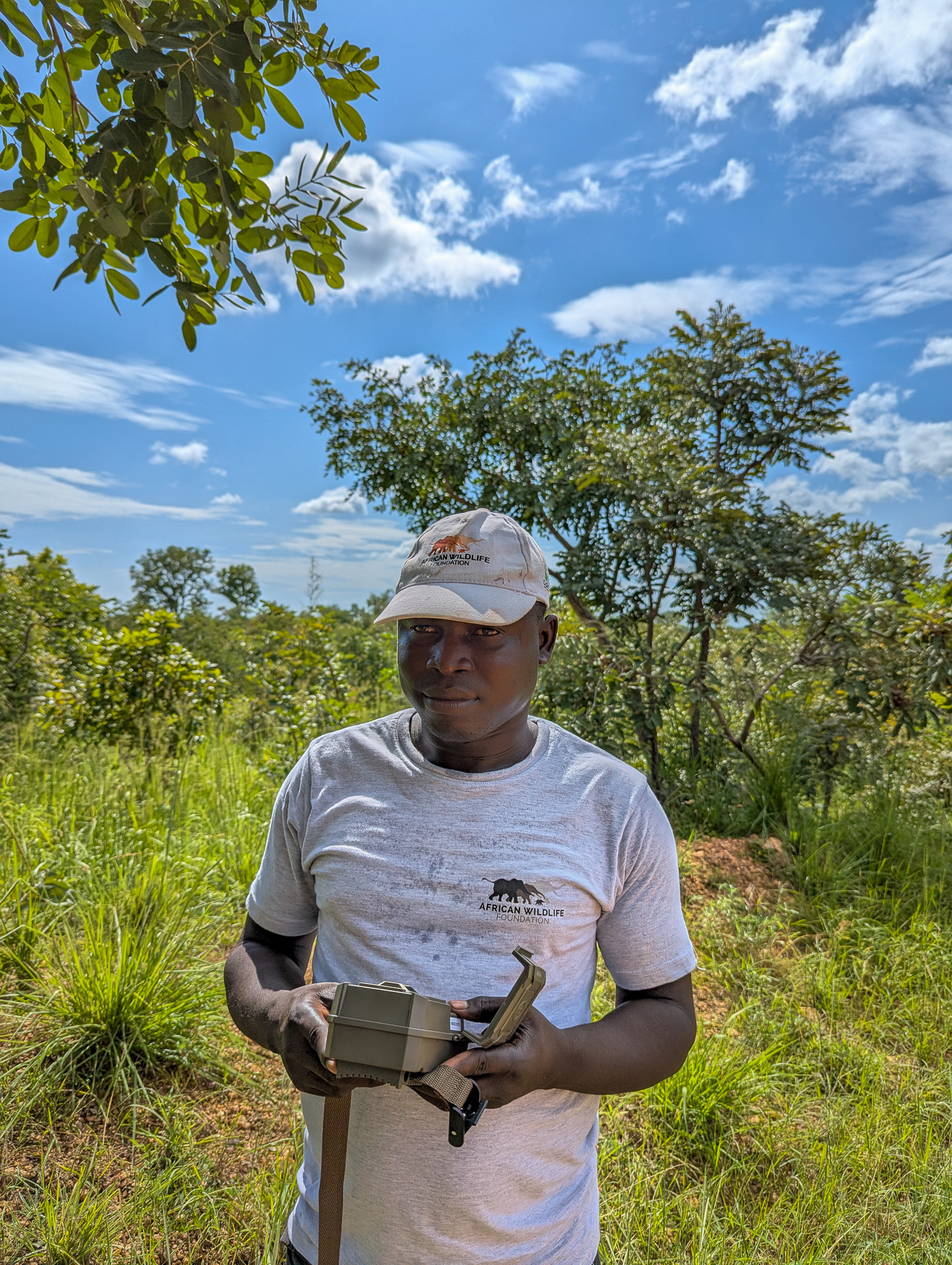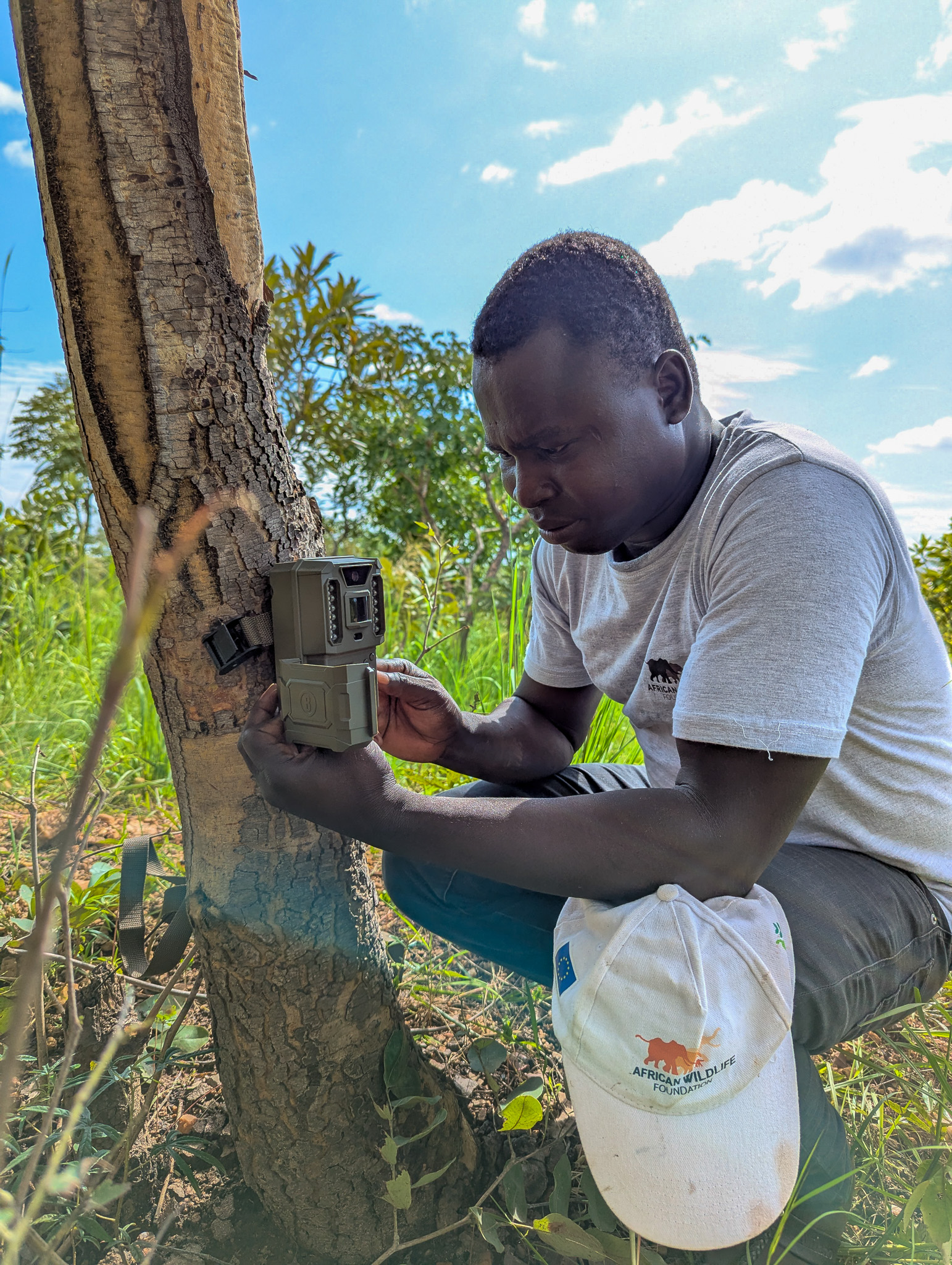Rediscovering Faro National Park: A Wildlife Comeback in Cameroon

Ecoguards collecting data during Willdlife Survey
Wildlife surveys are more than scientific exercises—they are deep explorations into nature’s rhythms. They track animal populations, identify threats, and guide strategies that protect wildlife while supporting local communities.
Nestled in northern Cameroon’s Adamawa Region, Faro National Park stretches along the Faro River near the borders with Nigeria and Chad. A recent wildlife survey—led by the Ministry of Forestry and Wildlife, with support from the African Wildlife Foundation (AWF) and funding from the European Union through the CaSeVe project—revealed both encouraging signs of recovery and ongoing conservation challenges.
Key Takeaways
● 34 large and medium mammal species were recorded in the latest Faro National Park survey, including lions, leopards, and Kordofan giraffes.
● Hippopotamus populations rebounded to 508 individuals — evidence of ecosystem recovery.
● The survey, funded by the EU through the CaSeVe project, strengthened collaboration between AWF, government, and communities.
● Ongoing threats include poaching, gold panning, fishing, and climate-driven grazing pressure.
Dr. Kondasso Taiga, technical assistant with AWF, shares his experience and insights from this survey exercise.

AWF Technical assistant, Dr. Kondasso Taiga in Faro National Park during the Wildlife Survey
Q1: As a technical assistant for the wildlife inventory in Faro National Park, can you briefly describe the survey and your role in it.
Dr. Taiga: The survey focused on large and medium-sized mammals—hippopotamuses, buffalos, Buffon’s Kob, hartebeests, and small felines. My role was twofold: I participated in fieldwork, joining teams on reconnaissance and observation missions, and I coordinated operations from the command center, managing logistics, GPS tracking, and daily planning.
This dual role allowed me to understand both the technical and human sides of the work. It was my second survey in Faro, and each time I learn more about how data is gathered and how people make it happen.
Q2: What does it take to complete a wildlife survey of this scale?
Dr. Taiga: Completing a wildlife survey in a park like Faro is a massive undertaking. It requires months of preparation, coordination across multiple teams, and strong logistical support. We had to deploy field teams across vast and rugged terrain, manage GPS tracking, ensure daily planning, and maintain communication between the field and the operations center.
From fuel and food supplies to data sheets and satellite connectivity, every detail matters. In many ways, we were building a temporary infrastructure in the wild so that science could happen safely and effectively.
Q3: Why has it taken this long to get a survey done in Faro?
Dr. Taiga: Faro is remote and logistically demanding. Past efforts were limited by funding, security concerns, and lack of technical capacity. Through the CaSeVe project, supported by the European Union, we finally had the financial, institutional, and technical resources needed.
Just as important, we invested time in building trust with local communities and training teams to work in these challenging conditions.
Q4: How did community involvement influence your work in the field?
Dr. Taiga: It made a significant difference. Their experience helped us navigate difficult terrain and avoid risks. Their presence also facilitated dialogue with local populations during our movements, improving acceptance of our activities and reducing potential tensions.
In many ways, they were cultural and ecological bridges, helping us move through the landscape not just physically but socially and ethically. Their involvement enhanced the overall effectiveness of the operation.
Q5: Were there any memorable moments during the exercise?
Dr. Taiga: Absolutely. One moment that stands out was watching a herd of hippos move across the plains at sunset. It was quiet, golden, and deeply moving—everyone paused to take it in. It reminded me why we do this work.
Another was following the guidance of community trackers who showed us signs of lion activity we might have missed. Their knowledge enriched our findings and deepened our collaboration.
Q6: What was AWF’s role in the exercise?
Dr. Taiga: AWF played a central role in technical coordination, field support, and community engagement. I was responsible for logistical planning, supervising field teams, and ensuring data integrity. We also helped train eco-guards and community trackers, building local capacity for future conservation efforts.
Our role was to ensure that the science was sound, the teams were supported, and the communities were involved. We acted as a bridge between field operations and the broader conservation strategy.
Q7: What were some key findings from the wildlife survey?

Dr. Taiga retrieves data from the cameratraps
Dr. Taiga: The results were encouraging. We recorded 34 species of large and medium mammals, including Colobus monkeys, lions, leopards, and Kordofan giraffes, all classified as fully protected in Cameroon.
The Buffon’s Kob population was estimated at 4,673 individuals (1.41 animals/km²). We also saw strong numbers for roan antelope, buffalo, harnessed guib, and Derby eland.
One of the most remarkable findings was the increase in hippopotamus numbers—508 individuals counted along the Faro and Déo Mayo Lifé section (2.85 hippos/km²). These figures show a clear rebound compared to the 2021 survey.
Q8: What challenges or threats did the survey reveal?
Dr. Taiga: Despite the positive trends, we found serious threats—especially gold panning, poaching, fishing, and transhumance. These pressures are concentrated in the park’s southern part, near villages like Sarkimata and Mana.
Climate change is also driving pastoralists deeper into protected areas due to shrinking pasture and water sources. These threats risk undermining our conservation gains and highlight the need for stronger community patrols and permanent ranger bases.
Editor’s Note
Wildlife surveys like this one are more than scientific exercises—they are blueprints for conservation action. They inform governments, empower local communities, and reveal the delicate balance between nature and human activity.
In Faro National Park, the collaboration between the African Wildlife Foundation, the Ministry of Forestry and Wildlife, and the European Union’s CaSeVe project shows how partnership can revive ecosystems on the brink.
Thanks to the dedication of professionals like Dr. Kondasso Taiga, Faro is not only surviving—it’s slowly reclaiming its place as one of Cameroon’s vital wildlife strongholds.